Meta Ad Library: Analyzing Competition and Gaining Insights
Following the events surrounding the election of Donald Trump as President of the USA and the...
By: Johannes Fiegenbaum on 4/30/24 11:15 AM
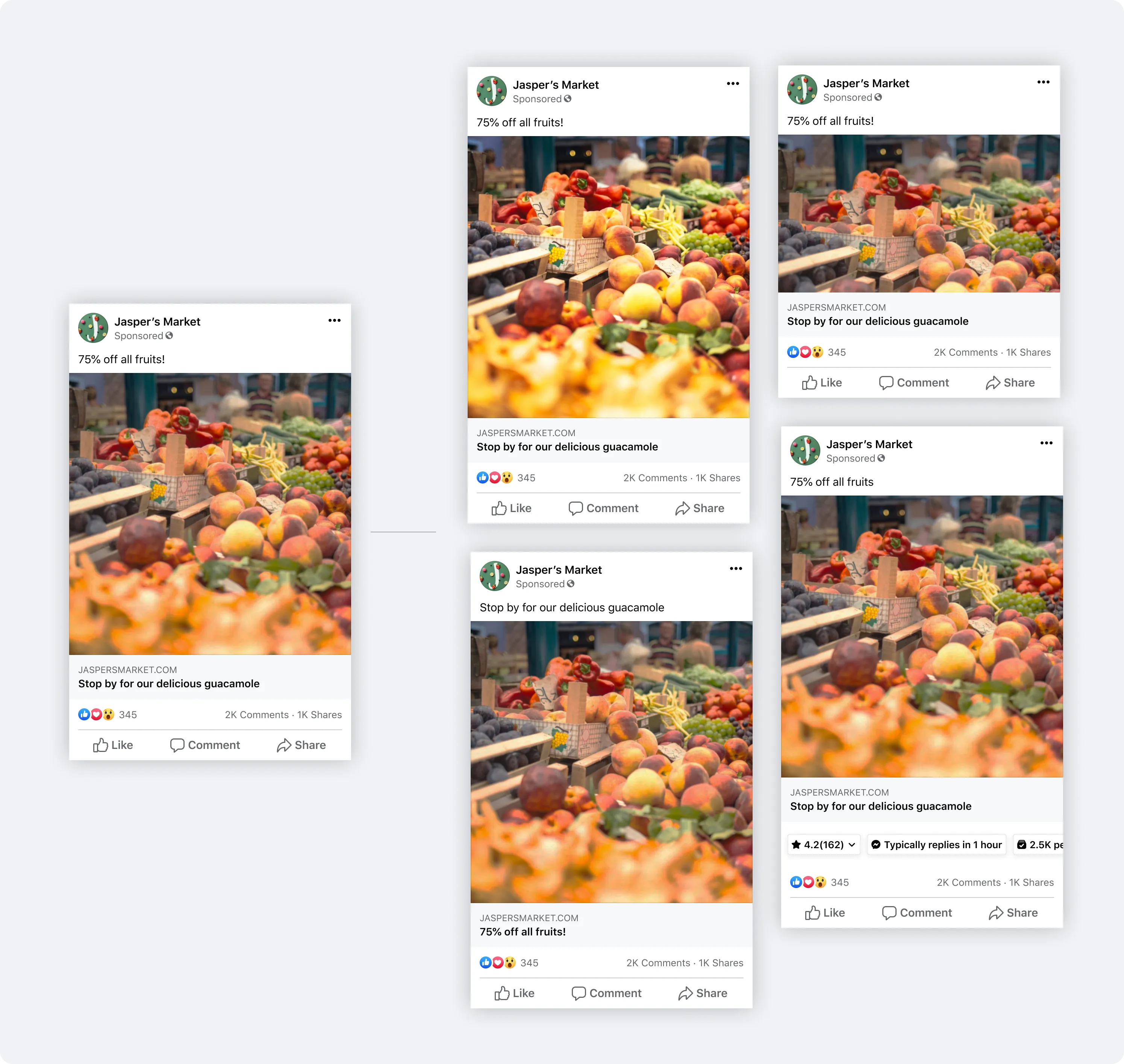
Advantage+ is Meta's major automation update for Instagram and Facebook Ads.
Meta has combined individual machine learning enhancements under one term. This should make social advertising on the platform easier and better. Many advertisers, especially SMEs and start-ups, fail due to the complexity of the Ads Manager. Something I also observe time and again. Tests of men versus women or Facebook versus Instagram placements, which primarily distract from the actual topics: Conversion API integration, assets, product.
What's behind Meta Advantage Plus?
Advantage Lookalikes and Advantage Detailed Targeting
Set up an Advantage Shopping campaign [Video]
In the future: Generative real-time AI
Frequently Asked Questions about Meta Advantage+
With Advantage Plus, Facebook relies on machine learning. Relevant target groups and ad placements, preview images and more are learned automatically without a human manually testing individual parameters on a laptop. One ad set at a time.
Machine learning requires a broad spectrum of results. That's why all of these measures are aimed at interlinking test parameters in the Ads Manager. Instead of targeting individual placements via different ad sets, all placements in the same ad set are selected. Instead of distributing individual lookalike sizes such as 1% and 5% across individual ad sets, lookalikes are automatically expanded in the same ad set, including retargeting. And so on. We will go into the individual components in more detail later. Meta uses its own capabilities here, which LinkedIn Ads, for example, does not offer - as I explain in this article: Why Startups Shouldn't Invest Budget in LinkedIn Ads.
The Meta Advantage products are designed to offer advertisers the following benefits:
In short, automation should simplify decision making, ad creation and optimization for advertisers.
For many SMEs and start-ups, this will be a blessing, while many agencies and consultants view it critically, simply because it reduces their own costs and therefore their income. There have already been similar comments about Google Ads Performance Max.
I see a big advantage in this: the focus shifts from the countless setting options to what really defines a company and its marketing: the positioning and strength of its own products. I have summarized a few points in this article: Brand strategy in times of crisis. The problem with digital channels: Numbers are produced every day and many lose focus in the process.
Eric Seufert explains more about the sense and inevitable consequences of automated ad management: Google's PMax, Meta's Advantage+, and the logic of total advertising automation.
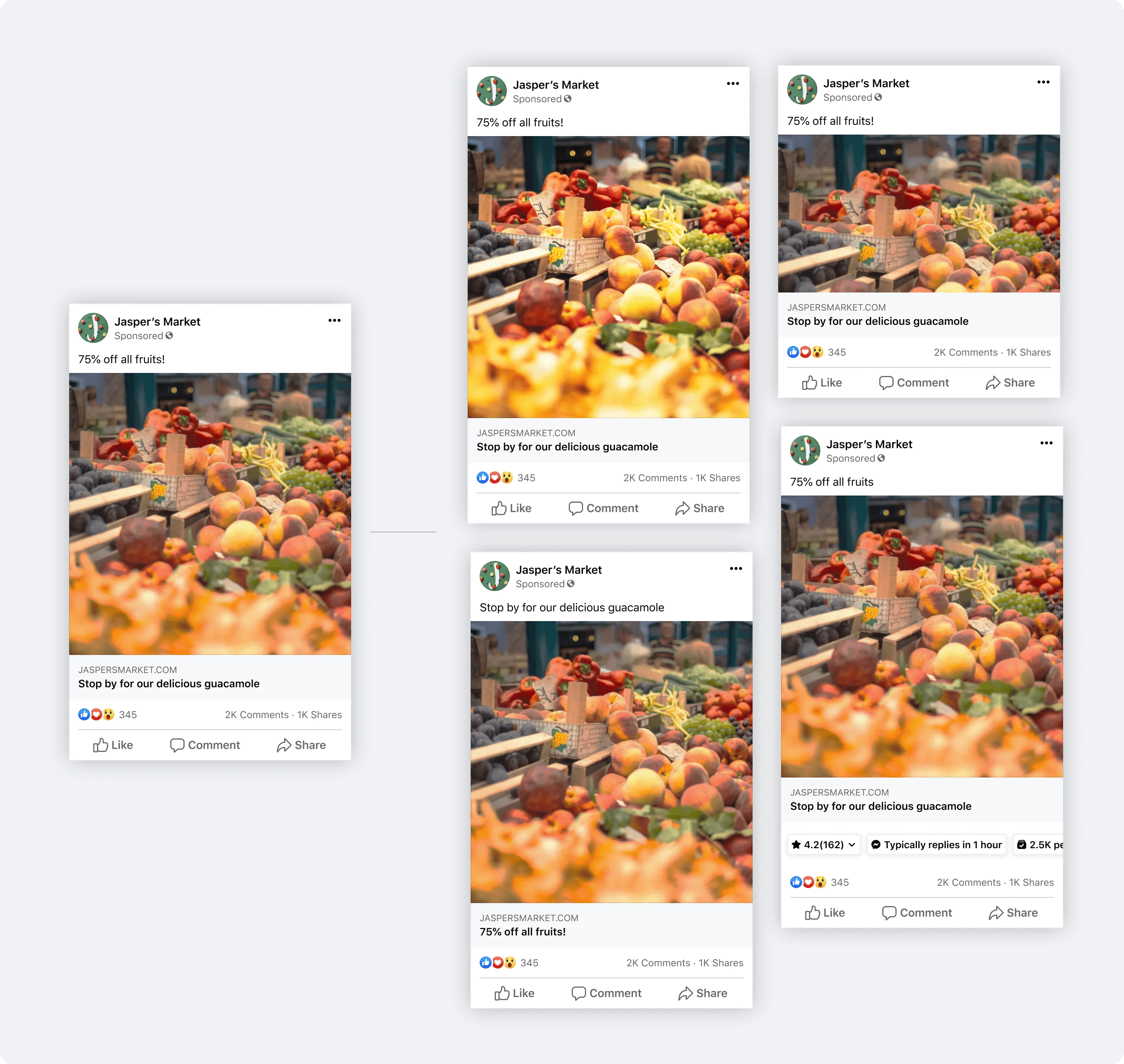
Advantage+ Creative, formerly Dynamic Creative and Dynamic Experience, bundles a number of creative optimizations into a single setting.
Media enhancements: Increase the quality and appeal of the image or video provided to the user. Examples include the following:
Ad-level composition changes: Adjustments to the ad and the placement of components in or around your ad. Depending on what users are likely to respond to. Examples include:
A recent meta study for Instagram and Facebook Ads showed a 3% lower CPA when using Dynamic Experiences to automatically optimize ads in campaigns optimized for link clicks, landing page views and offsite conversions.
With generative AI for image enhancement and text creation already available in parts, this development is entering a new phase.
Background generation creates different backgrounds for advertisers to create. Image expansion helps with reuse by adapting to different aspect ratios in feeds or reels. Text variations create multiple versions of a text based on the advertiser's original text.
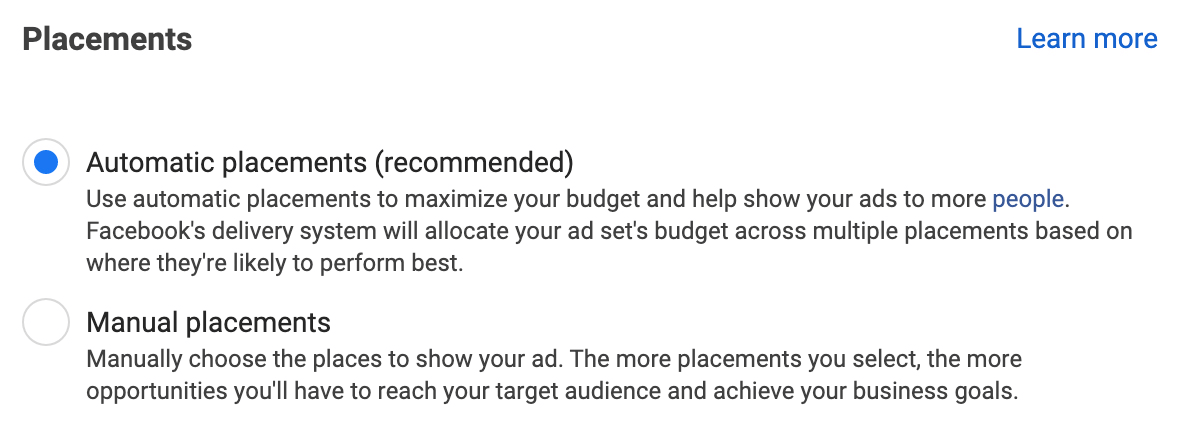
Meta automatically finds the most effective placement for a particular ad and offers advertisers. Placing ads in 6 or more placements, especially across Facebook and Instagram, gives Meta more flexibility to reduce costs and minimize risk.
I always like to compare this to asset allocation in stock trading. What is the charm of the booming MSCI World ETFs? They diversify the investment over a broad horizon at low cost. Just like Automatic Placements does. In addition, Automatic Placements invests in the placements that are performing well, further increasing returns.
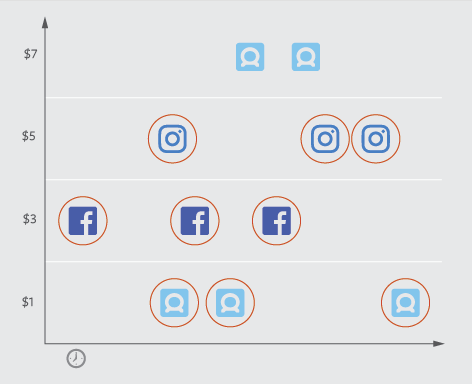
In this case, you could decide to switch off Instagram. There are 9 optimization events for 27 USD for an average of 3 USD and Instagram is the most expensive placement. But this isolated view is a fallacy. Because by taking away the Instagram placements, the following would happen:
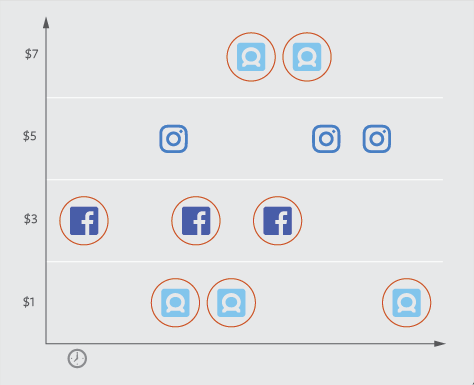
The system would still try to achieve all optimization events, but would now have to fall back on the expensive Audience Network events. In total, this results in 8 optimization events for 26 USD with an average of 3.25 USD per event.
This is less efficient.
Historically, lookalike sizes were often tested individually. One ad set with 1% lookalikes, another with the 2-3% lookalikes excluding the 1% lookalikes and so on. Advantage+Lookalike allows the meta system to reach a broader group of people than the one defined in the advertiser's lookalike audience. For example, if Advantage+ Lookalikes determines that better performance can be achieved outside the defined lookalike audience, the target group is automatically expanded. This is the Lookalike Expansion.
Detailed Targeting Expansion or Advantage+ Detailed Targeting works according to the same principle. This is about interests that are often specified individually. For example, interest in golf clubs as an indicator for wealthy users. With Advantage+ Detailed Targeting, Meta only uses the interests as a hint and then expands independently to include interests that could be relevant for the advertised product. This increases flexibility and reduces costs, as individual interests often have a limited reach. Although it was possible to achieve good results for a short time, the "golf clubs" target group was then exhausted in the medium term and costs shot through the roof. The automatic extension solves this problem. And hopefully I will have fewer discussions about individual interests in future.
Advantage+ App Campaigns simplify the creation of app install campaigns and improve app ad results by customizing ads in terms of audience, placement and design. It is nothing more than a separate use case for the different parts of the Advantage+ suite: Creative, Placement, Audience with additional optimization options for App Events and Value Optimization.
Overall, a lot depends on the integration of Automated App Ads with Apple's SKAdNetwork. I have written a guide on this in this article: SKAdNetwork explained: How conversions are measured via iOS.
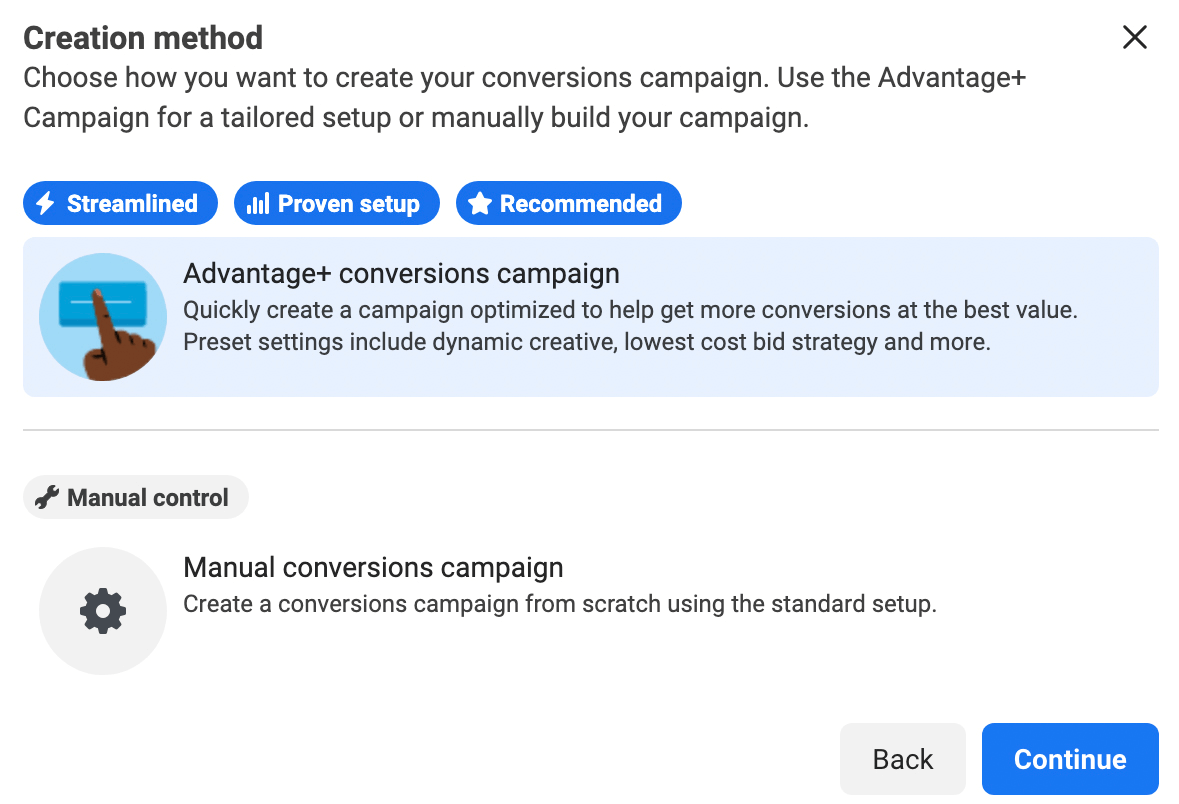
Automated Shopping Ads are a separate use case for the various Advantage+ features: creative, targeting, placements and budget.
My tests achieved incrementally better results compared to business-as-usual.
A case study can be found here: Wolverine Boots: Meta Advantage+ shopping campaigns enhance performance metrics
In this video I show you how to set up Advantage+ Shopping.
The future expansion of the Advantage+ tool set will run along two main axes. On the one hand, it already enables more comprehensive experiments that cover all possible combinations of target groups, ad placements and the available creative variants. Secondly, it offers a faster response to performance data, which in theory should reduce spend on ineffective audience or creative combinations while maximizing investment in effective combinations.
The essence of the opportunity with Generative AI in ad production lies in the automated creation of new concepts, not variants, based on performance - in real time. Taken to its logical conclusion, ads could be tailored to the preferences of an individual user, resulting in truly personalized ads at the level of each user. Text variations and image expansion represent the very first step towards this goal.
But: Advantage+ and Google's PMax are ultimately opaque. Advertisers want to make the best possible profit with every euro they spend. The advertising platforms, on the other hand, are more concerned with enabling just enough profit to keep advertisers happy while trying to increase spend on their platform.
If you have any questions about Meta Advantage, feel free to contact me.

ESG & sustainability consultant specializing in CSRD, VSME, and climate risk analysis. 300+ projects for companies like Commerzbank, UBS, and Allianz.
More aboutFollowing the events surrounding the election of Donald Trump as President of the USA and the...
The financial crisis in 2009, the coronavirus pandemic in 2020-2022, the energy crisis in 2022 -...
Growth marketing can provide start-ups with targeted support to help them grow quickly, sustainably...